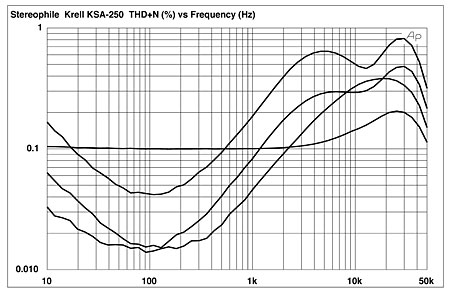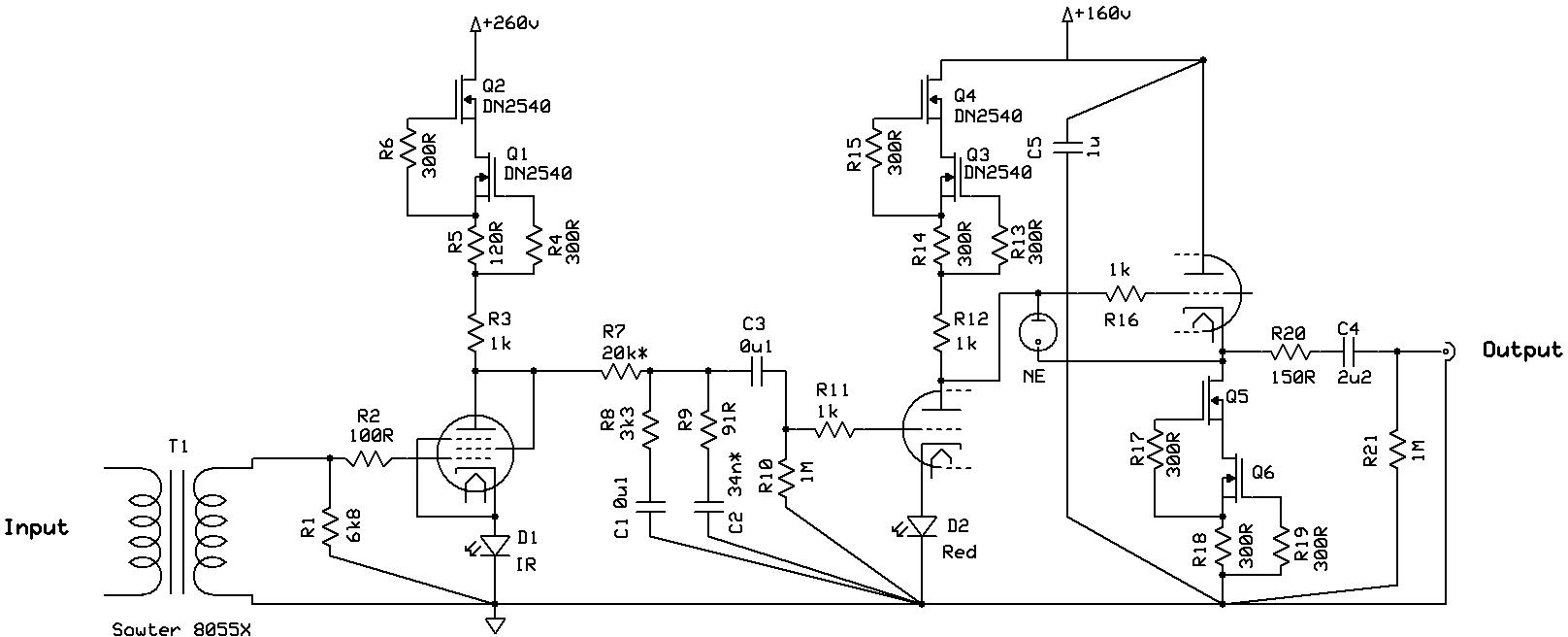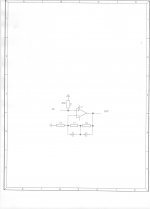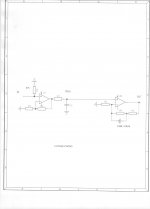They imply that nos with no reconstruction filter dac's are better. Witch is a sales pitch.If you are referring to the site posted by dvv, I think the site didn't do "sciency" speak nor lies. They are neutral by saying what has been said by the person who brought the idea of non-oversampling with paralleled TDA1453.
That they said "In a recent interview, he stated that the issue was not whether it is Non-Oversampling or Oversampling, but the use of the digital filter" is not an effort to sell anything.
Jitter is not caused by the filter itself, but by the clock of the DAC.Ryohei Kusunoki indeed said that the oversampling requires digital filter and often the digital filter is of insufficient quality so to create "jitter".
The designer is wrong and the site used it as sales pitch.So do you think Kusunoki was wrong? Or the site purposely misinterpreted Kusunoki??
All equipment produces harmonic distortion and IM distortion and it goes up with frequency.Agree that a few Hz above 20kz can be audible/sensible but how to proof that it will produce sufficiently large IMD (any reference?)?
Here are some measurements:
Krell KSA 250 from Stereophile.

Parasound Halo A21 from The Audio Critic.
An externally hosted image should be here but it was not working when we last tested it.
A NOS dac with no reconstruction filter will produce very large amounts of ultrasonic frequencies at large amplitudes. Not only does it produce frequency contend around 1fs and 2fs but every harmonic of the sampling frequency, as far as the circuitry allows.

Add this together and you get lots of IM distortion.
Hi,
It may be a bit of a stretch but what if the entire FR is time shifted?
What in the world does that mean?
Hi,
LOL.
Quite simply, if you were to compare the input and output signals of a sample and you end up with only a time delay difference and no other differences between input and output.
IOW, a group delay over the entire band.
Anyway, that's not what's important, what happens within the time frame is what matters.
Cheers,
LOL.
Quite simply, if you were to compare the input and output signals of a sample and you end up with only a time delay difference and no other differences between input and output.
IOW, a group delay over the entire band.
Anyway, that's not what's important, what happens within the time frame is what matters.
Cheers,
The no filter DAC is a nonsense.
I am pretty sure that we are able to measure everything we need for excellent sounding audio. The only issue is personal taste.
+ ∞
Quite simply, if you were to compare the input and output signals of a sample and you end up with only a time delay difference and no other differences between input and output.
That's not "smear," that's "recording and replay."
Hi,
Full circle then.
So, disregarding jitter (which is random) and assuming a top notch analogue stage, where does the conversion go wrong?
If one were to believe the Nordost paper which suggests things go wrong at the power cords, mains quality and CDP support, (62% of the total error figure, really??) that still leaves us with 38% of errors/distortions that aren't accounted for.
What could be causing this then?
Cheers,
That's not "smear," that's "recording and replay."
Full circle then.
So, disregarding jitter (which is random) and assuming a top notch analogue stage, where does the conversion go wrong?
If one were to believe the Nordost paper which suggests things go wrong at the power cords, mains quality and CDP support, (62% of the total error figure, really??) that still leaves us with 38% of errors/distortions that aren't accounted for.
What could be causing this then?
Cheers,
Frank, you ask a serious question. Why are there different approaches to phono playback?
First, a little history. At least back to the early '50's, designers usually used a single stage of gain with the EQ part of the feedback loop. This approach is still used in inexpensive solid state phono stages, often found in mid fi level equipment. Its advantages are: simplicity, compactness, and reasonable S/N. Marantz, Mcintosh, Dyna, and just about everybody else used it in the tube days.
Even the original Levinson JC-2 had this same configuration, and I lived with it for about 15 years, until I started experimenting with 2 stage designs, that are what I use today.
Now, this simple 1 stage approach has certain limitations that are not always obvious. First, is the connection between the input and the output. It can be shown that the input and the output are virtually shorted to each other at high frequencies. This makes the requirement for unity gain stability from the gain stage (op amp in many cases) and the high frequency load to be R3. If R3 is a high value, then things are OK, BUT a high value of R3 makes the phono stage noisier, so it is a serious tradeoff. IF you want a relatively low value R3, then you have to design lots of output current into the output stage, or you will overload it at very high frequencies. In fact, you will slew rate limit the phono preamp, as well, because for a small R3, then C1 and C2 have to be proportionally larger, all else being equal. This is a fundamental limitation of a phono stage like the Dyna PAS3 tube preamp, for example. In this case, such as the Dyna phono stage, it will sound 'soft' or slightly muffled, compared to other designs, especially with MC cartridges. (more later)
First, a little history. At least back to the early '50's, designers usually used a single stage of gain with the EQ part of the feedback loop. This approach is still used in inexpensive solid state phono stages, often found in mid fi level equipment. Its advantages are: simplicity, compactness, and reasonable S/N. Marantz, Mcintosh, Dyna, and just about everybody else used it in the tube days.
Even the original Levinson JC-2 had this same configuration, and I lived with it for about 15 years, until I started experimenting with 2 stage designs, that are what I use today.
Now, this simple 1 stage approach has certain limitations that are not always obvious. First, is the connection between the input and the output. It can be shown that the input and the output are virtually shorted to each other at high frequencies. This makes the requirement for unity gain stability from the gain stage (op amp in many cases) and the high frequency load to be R3. If R3 is a high value, then things are OK, BUT a high value of R3 makes the phono stage noisier, so it is a serious tradeoff. IF you want a relatively low value R3, then you have to design lots of output current into the output stage, or you will overload it at very high frequencies. In fact, you will slew rate limit the phono preamp, as well, because for a small R3, then C1 and C2 have to be proportionally larger, all else being equal. This is a fundamental limitation of a phono stage like the Dyna PAS3 tube preamp, for example. In this case, such as the Dyna phono stage, it will sound 'soft' or slightly muffled, compared to other designs, especially with MC cartridges. (more later)
Attachments
I bought a pair recently to renew my experience of 40 years ago. I was bamboozled into selling my pair. After a brief period of disappointment I fell back in love with them. They sometimes totally win me. When they don't I am still astonished how little has really improved when modern designs.
The highs do drop off over 10kHz, but their outstanding quality is in the bass. With a good solid state amp, they can be excellent.
Hi,
It was the brick wall filter in non-upsampling DACs that was often accused of being the cause of all kinds of nastiness: time smear (there you have it again), phase anomalies and what have you.
There's an interesting paper on all that by Doug Rife of DRA Labs. (Search for
Upsampling Theory Rev. 2.pdf.
The most freaky part is that, apparently, the data on the medium already is time smeared, never to be recovered. Quite shocking, no idea if it's actually true.
Cheers,
On my DAC - I seem to remember reading somewhere that such units, including mine, do not have digital brick wall filters, but do have first order analog filters for ultrasonics. If memory serves, and I'm not sure it does, the - 3dB point is around 60 kHz or so.
It was the brick wall filter in non-upsampling DACs that was often accused of being the cause of all kinds of nastiness: time smear (there you have it again), phase anomalies and what have you.
There's an interesting paper on all that by Doug Rife of DRA Labs. (Search for
Upsampling Theory Rev. 2.pdf.
The most freaky part is that, apparently, the data on the medium already is time smeared, never to be recovered. Quite shocking, no idea if it's actually true.
Cheers,
where does the conversion go wrong?
If one were to believe the Nordost paper which suggests things go wrong at the power cords...
...which coincidentally, they happen to sell.
Now what about a 2 stage phono gain block? Here is an example. By separating the time constants, it is easier to make a more accurate RIAA eq, and the gain stages do not get so heavily loaded at high frequencies. Also, unity gain compensation is not necessary as well, and the slew rate limitation vs noise is overcome. There are several variations to this 2 stage approach, so now we get to the question that Frank asked: What is the difference between active and passive eq? Of course, this example uses both active and passive eq. (more later)
Attachments
Hi,
@John Curl: Thank you for the input. An excellent analysis as usual.
One of the interesting approaches to driving a passive EQ network, IMHO, is to buffer the amplifying stage with a CF as was implemented by Dr. Dusan Klimo.
At the end of the day, there's always a compromise somewhere...
What else is new.....
The marketing approach is interesting though.
Cheers,
@John Curl: Thank you for the input. An excellent analysis as usual.
One of the interesting approaches to driving a passive EQ network, IMHO, is to buffer the amplifying stage with a CF as was implemented by Dr. Dusan Klimo.
At the end of the day, there's always a compromise somewhere...
...which coincidentally, they happen to sell.
What else is new.....
The marketing approach is interesting though.

Cheers,
By separating the time constants, it is easier to make a more accurate RIAA eq, and the gain stages do not get so heavily loaded at high frequencies.
Why would separated time constants be more accurate?
Looking at an all-in-one-go circuit (i.e., the time constants are not separated but are in a single block) with which I'm very familiar

On my DAC - I seem to remember reading somewhere that such units, including mine, do not have digital brick wall filters, but do have first order analog filters for ultrasonics. If memory serves, and I'm not sure it does, the - 3dB point is around 60 kHz or so.
From reading the site, it seems it is the original Kusunoki DAC. Shunted capacitor of 1.2nF at the output was said to have it at 49kHz?
Some other circuits uses LC (second order) filter with around 1mH and 800pF.
The no filter DAC is a nonsense.
I am pretty sure that we are able to measure everything we need for excellent sounding audio.
Is there any reference for the measurement of TDA1543 based Kusunoki DAC? What are to be measured?
Kusunoki's claim/assumption (IIRC) was that frequency above 20kHz was beyond human perception. A simple analog filter at the output, how does it affect measurement?
Personal taste on sound? Before going to that, I think one must identify which measurement parameters correlate with which sound characters.The only issue is personal taste.
- Status
- Not open for further replies.
- Home
- Member Areas
- The Lounge
- Sound Quality Vs. Measurements

